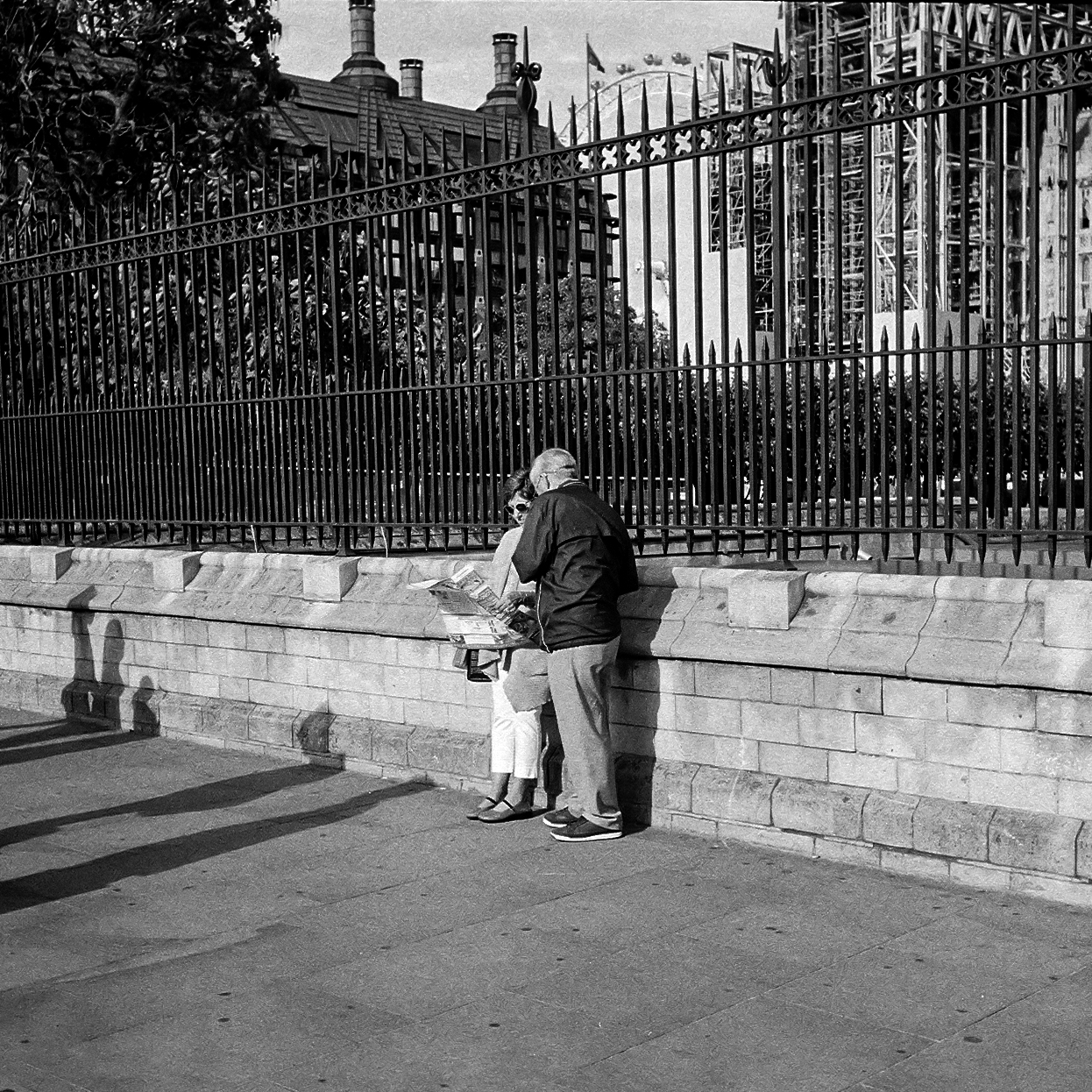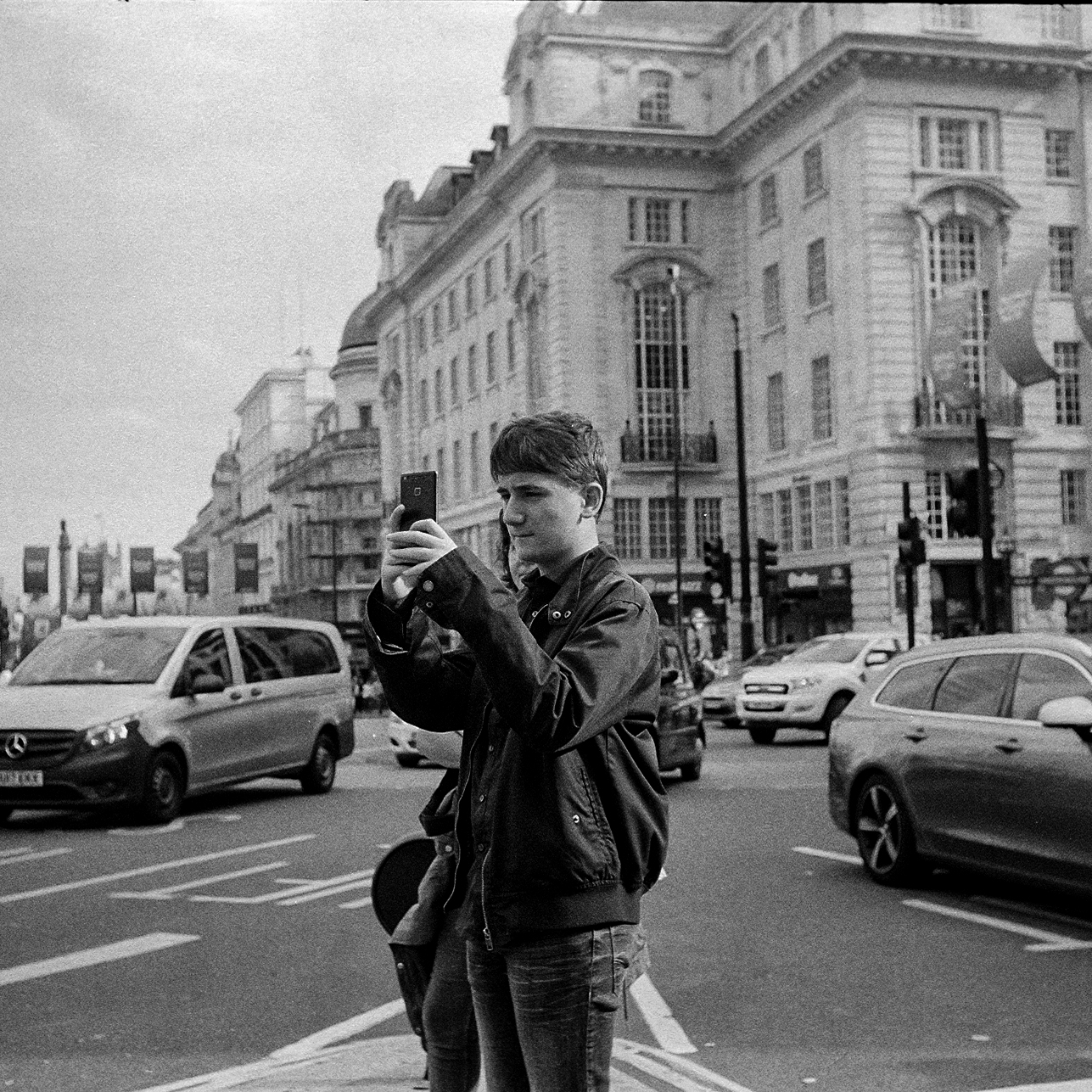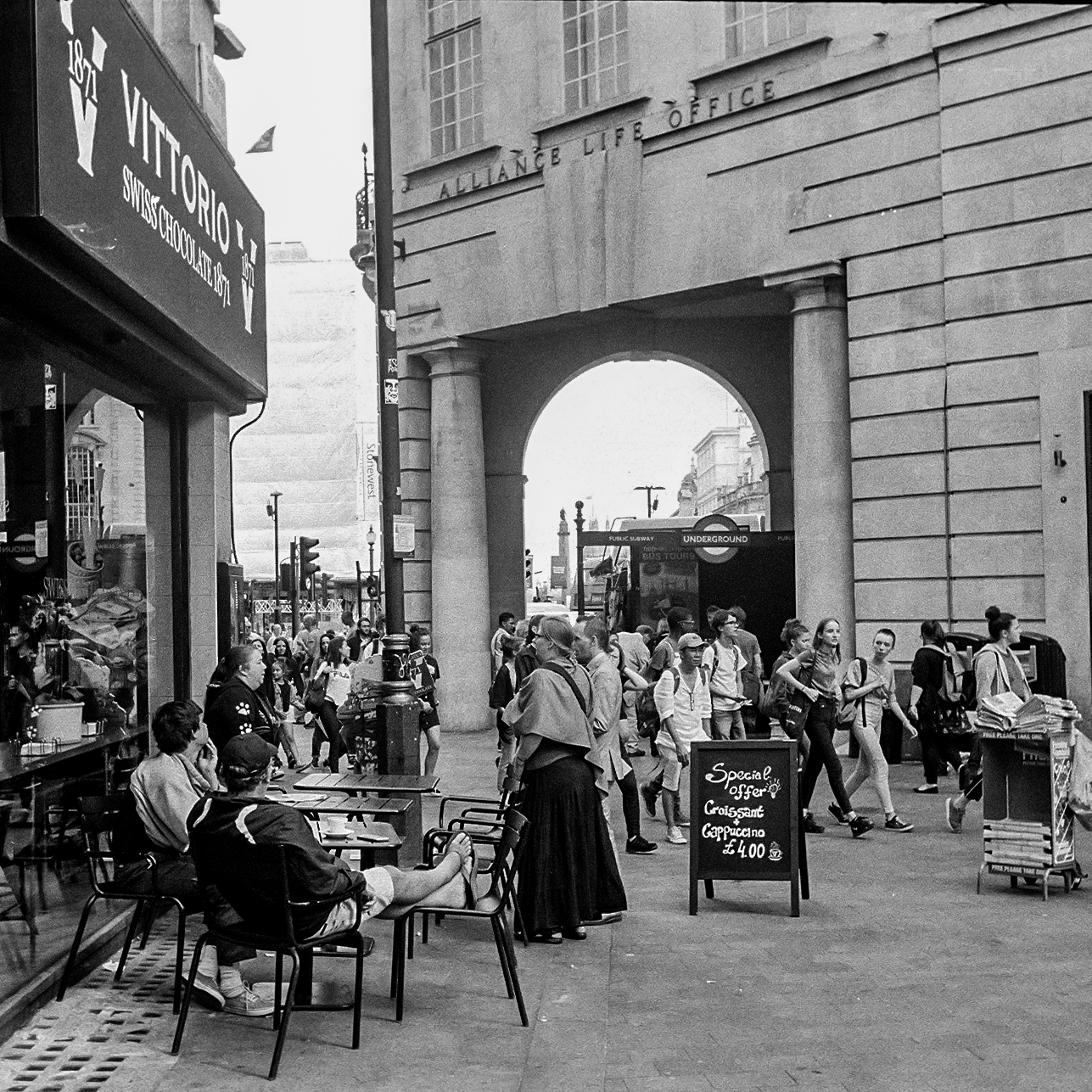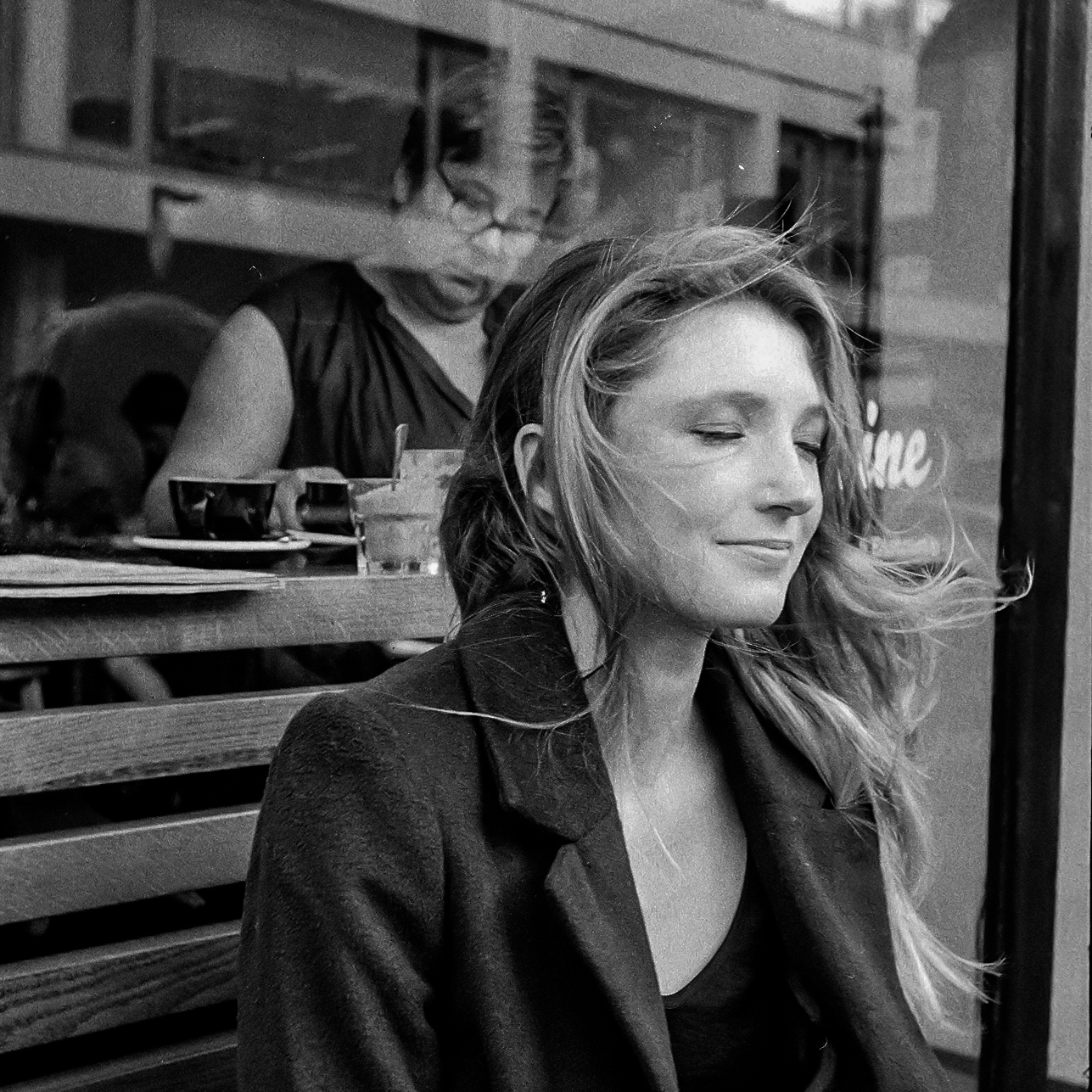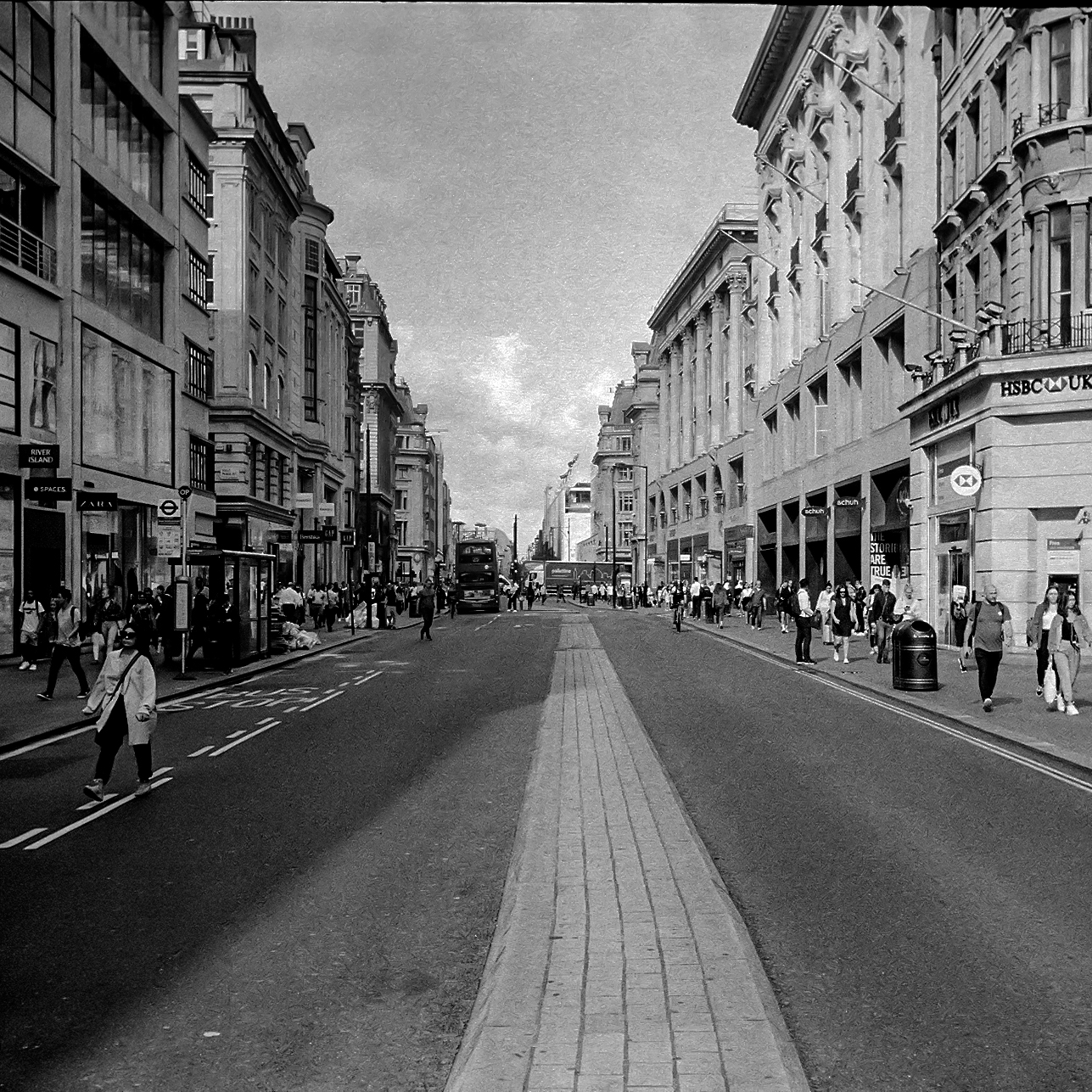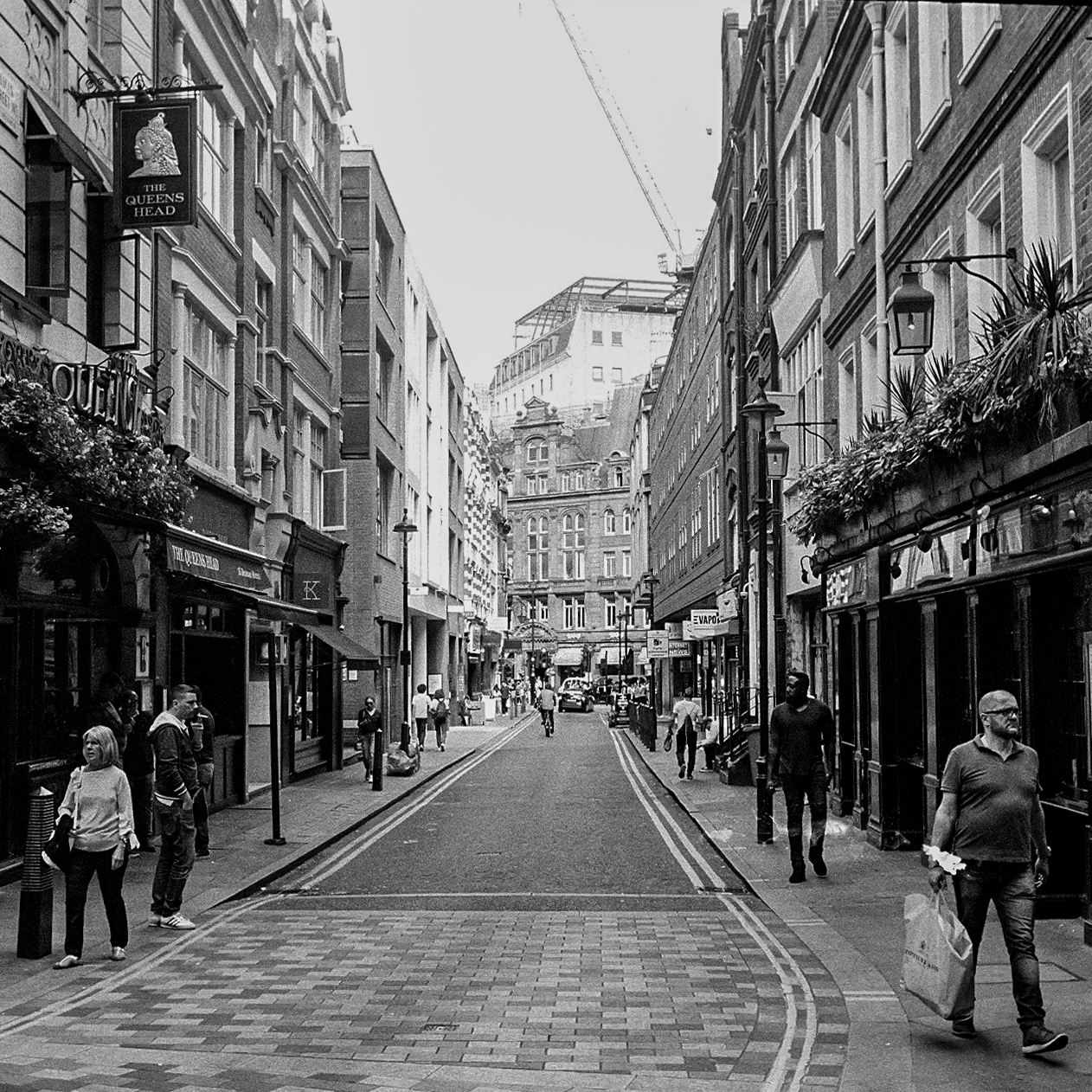
I’ve been working a lot lately, and not making many photographs. And, if I'm honest, which I typically always attempt to be, I haven’t really felt comfortable making images in London. There has been something that has been a bit intimidating about shooting in scenes where there are people always looking — examining what it is I’m doing and why I’m trying to take their photo without them knowing about it. It’s not easy for me to connect entirely with the surroundings or feel comfortable shooting. This could also be because I’ve primarily made images with a large medium format camera since moving here a year ago and it looks challenging to stare down the lens. I wouldn’t consider myself a street photographer or someone who flourishes with photography in urban environments.
However, since we arrived here, I’ve been fascinated with classic photographers who have made the streets come along through their viewfinder. I’ve marveled at how they were able to move fluidly between people on the sidewalks and in the streets, undetected and yet wholly present.
This past Sunday, a friend from my church offered me her great grandfather’s 1933 Leica IIIg screw-mount camera and a handful of lenses. I was a bit shocked, but she said her dad was going to throw it in the bin and so she wanted someone who might use it to have it. I cried. It was one of the kindest and most thoughtful gifts I’ve ever received. To this day, it still is a gift I daily think about as it sits on my shelf or when I go out to use it.
I’ve never been fortunate enough to own a Leica before, but as someone who has embraced the craft of photography for the better part of the last 10 years, I’ve always known of it and seen some of the incredible work made with them. So, when I undeservedly was given this work of art, I felt empowered to create images that I not only would be proud of but would harken back to a time where the still frame reigned. Unsure of how to use the camera, I researched and spent time shooting blanks at home, trying to become familiar with the new knobs and winders and small viewfinders, and focusing techniques. I told the friend from church that I would love to make some images of her using it, so because of that, I needed to make sure I could actually make any pictures at all with it.
I purchased a roll of Ilford HP5 Plus 400, loaded it in, and prayed that I could figure it out. To challenge myself, I aimed to finish off the roll in 24 hours and have it developed to see what the outcome was and if I needed to tweak anything on the camera to get it working. The photos below are the result of that first roll of film. And, although many are probably ‘too grainy’ or somewhat out of focus, I’ve found myself coming back to them over and over, with the feeling that perhaps for the first time, I was able to cross a threshold of mine and see my own work in a different and new way than I had before. Also, it was great to know the camera worked as well.

